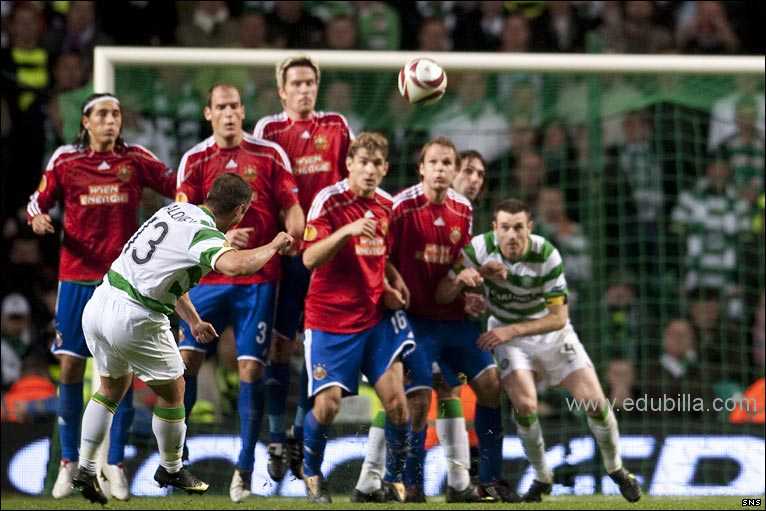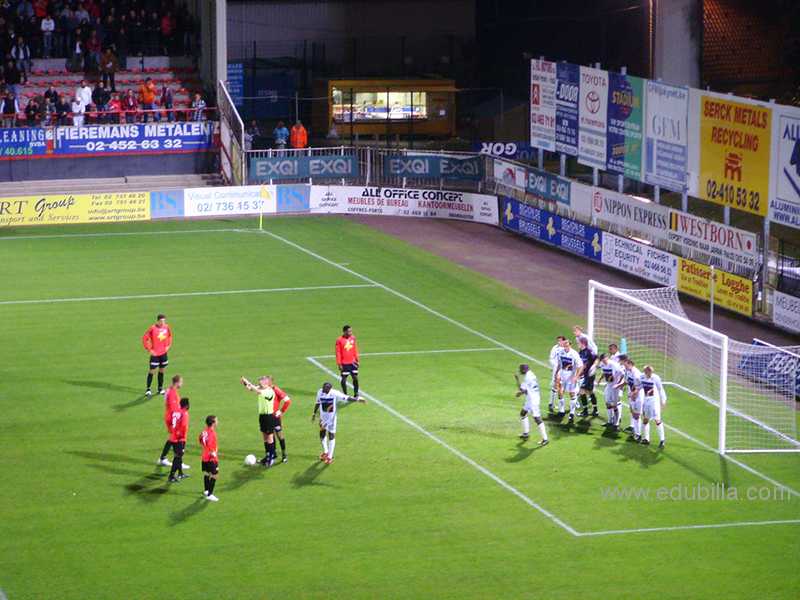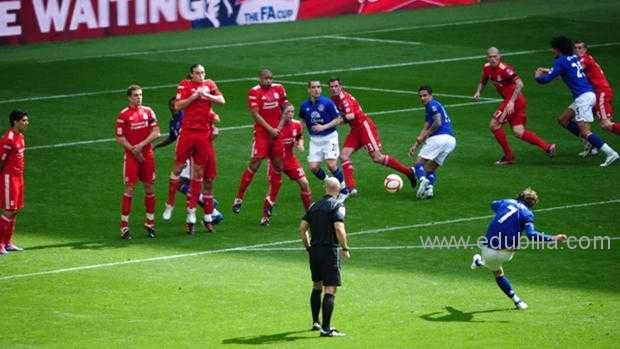
Overview Of Football
Football refers to a number of sports that involve, to varying degrees, kicking a ball with the foot to score a goal. Unqualified, the word football is understood to refer to whichever form of football is the most popular in the regional context in which the word appears: association football (also known as soccer) in the vast majority of the world; gridiron football (specifically American football or Canadian football) in the United States and Canada; Australian rules football or rugby league in different areas of Australia; Gaelic football in Ireland; and rugby football (specifically rugby union) in New Zealand.These different variations of football are known as football codes.
Various forms of football can be identified in history, often as popular peasant games. Contemporary codes of football can be traced back to the codification of these games at English public schools in the eighteenth and nineteenth centuries.The influence and power of the British Empire allowed these rules of football to spread to areas of British influence outside of the directly controlled Empire,though by the end of the nineteenth century, distinct regional codes were already developing: Gaelic Football, for example, deliberately incorporated the rules of local traditional football games in order to maintain their heritage.In 1888, The Football League was founded in England, becoming the first of many professional football competitions. During the twentieth century, several of the various kinds of football grew to become among the most popular team sports in the world
Game Rules
The rules of football are officially referred to as the "Laws of the Game".
There are 17 laws in total, each one briefly summarised below.
Field of Play:
The game can be played on either natural or artificial surfaces, the surface must be green and rectangular in shape. The two long sides of the rectangle are called touch lines and the two shorter sides are called goal lines. The field is divided in half by the halfway line.
Ball.:
Must be spherical, made of leather (or similar) 68-70 cm in circumference and of a certain pressure.
Number of Players:
Two teams of no more than 11 players (one of which is the goalkeeper). A game cannot start if either team has less than 7 players.
Equipment:
Players must wear a jersey, shorts, stockings, shinguards and footwear.
Referee:
The referee ensures the Laws of the Game are respected and upheld.
Assistant Referees:
There may be at most 2 assistant referees.
Duration of the Match:
The game is played in 2 halves consisting of 45 minutes each. The half time interval must not exceed more than 15 minutes. At the discretion of the referee more time is allowed to compensate for any stoppage during play e.g. Due to substitutions or care and attention of injured players.
Start and Restart of Play:
A kick-off starts play at the start of the match or after a goal. A kick-off involves one player kicking the ball, from stationary, forward from the centre spot. All players must be in their own half prior to kick-off. A coin is tossed pre-game, the team which loses the toss are awarded the kick-off to start the game whilst the team that win the toss are allowed to choose which direction they want to play. After half time the teams switch direction and the other team will kick-off. After a goal is scored, the team which conceded the goal will kick-off to restart play.
Ball in and Out of Play:
The ball is out of play once a goal has been scored or when the referee has stopped the game. The ball is in play at all other times.
Method of Scoring:
The ball crosses the goal line inside the goal mouth.
Offside:
It is an offence for a player to be in contact with the ball when they are closer to the opponents' goal than both the ball and the second-last opponent. The offside rule exists to ensure there are always opponents (generally the goal keeper and a defender) between a player receiving the ball and the goal. Without the offside rule, play can become boring with repeated long balls being kicked to a player stood next to the goalkeeper for an easy goal.
Fouls/Misconduct:
These are many and varied, broadly speaking it is an offence to use excessive force whilst playing the game either deliberately or undeliberately or to handle the ball (unless you are a goal keeper). The referee may show the yellow card to caution players for less serious offences and the red card for more serious offences resulting in the player being sent off. Two yellow cards are equivalent to one red card.
Free Kicks:
Are given by the referee for fouls and misconduct. A free kick can either be direct or indirect. A goal can be scored directly from a direct free kick. A goal can only be scored from an indirect free kick if it touches at least one other player first. The free kick must be taken from a stationary position with that position varying depending on whether the free kick was given inside or outside the goal area and whether it's direct or indirect. The opposing team must be a minimum of 9.15 m from the ball when the free kick is taken.
Penalty Kicks:
Are given against a team when they commit an offence which would normally be awarded a direct free kick inside their goal area. The ball is kicked from stationary from the penalty spot. The opposing team must be outside of the penalty area and at least 9.15 m from the ball.
Throw-in:
Used to restart play after the whole of the ball has crossed the touch line.
Goal kick:
Used to restart play after a goal has been scored.
Corner Kick:
Corner Kick is given when the whole of the ball crosses the goal line and was last touched by a member of the defending team (and no goal was scored). A corner kick is taken from inside the corner arc closest to the point where the ball crosses the goal line. The defending team must be at least 9.15 m from the ball when the corner kick is taken.
Detailed Football Rules Can Be Downloaded From Documents
Equipments Need For Football
Ball:
Spherical and made of leather or another suitable material.
Goalkeeper Gloves:
Help in the handling of the ball.
Goal:
Consists of two upright posts joined at the top by a horizontal crossbar (2.44m by 7.32m – 8yds by 8ft). The goal is placed on the centre of each goal line.
Shin Guards:
Protection for the shins of the players. Shin guards are part of the mandatory equipment for players and must be completely covered by socks.
Uniforms:
Shirts, shorts and socks are worn in the team colours. Each goalkeeper wears colours that distinguish him from the other players, the referee and the assistant referees.
Soccer Boots:
Soccer boots may have studs or cleats across the sole.
History Of Football
The contemporary history of the world's favourite game spans more than 100 years. It all began in 1863 in England, when rugby football and association football branched off on their different courses and the Football Association in England was formed - becoming the sport's first governing body.
Both codes stemmed from a common root and both have a long and intricately branched ancestral tree. A search down the centuries reveals at least half a dozen different games, varying to different degrees, and to which the historical development of football has been traced back. Whether this can be justified in some instances is disputable. Nevertheless, the fact remains that people have enjoyed kicking a ball about for thousands of years and there is absolutely no reason to consider it an aberration of the more 'natural' form of playing a ball with the hands.
On the contrary, apart from the need to employ the legs and feet in tough tussles for the ball, often without any laws for protection, it was recognised right at the outset that the art of controlling the ball with the feet was not easy and, as such, required no small measure of skill. The very earliest form of the game for which there is scientific evidence was an exercise from a military manual dating back to the second and third centuries BC in China.
This Han Dynasty forebear of football was called Tsu' Chu and it consisted of kicking a leather ball filled with feathers and hair through an opening, measuring only 30-40cm in width, into a small net fixed onto long bamboo canes. According to one variation of this exercise, the player was not permitted to aim at his target unimpeded, but had to use his feet, chest, back and shoulders while trying to withstand the attacks of his opponents. Use of the hands was not permitted.
Another form of the game, also originating from the Far East, was the Japanese Kemari, which began some 500-600 years later and is still played today. This is a sport lacking the competitive element of Tsu' Chu with no struggle for possession involved. Standing in a circle, the players had to pass the ball to each other, in a relatively small space, trying not to let it touch the ground.
The Greek 'Episkyros' - of which few concrete details survive - was much livelier, as was the Roman 'Harpastum'. The latter was played out with a smaller ball by two teams on a rectangular field marked by boundary lines and a centre line. The objective was to get the ball over the opposition's boundary lines and as players passed it between themselves, trickery was the order of the day. The game remained popular for 700-800 years, but, although the Romans took it to Britain with them, the use of feet was so small as to scarcely be of consequence.
Etymology:
There are conflicting explanations of the origin of the word "football". It is widely assumed that the word "football" (or "foot ball") references the action of the foot kicking a ball. There is an alternative explanation, which is that football originally referred to a variety of games in medieval Europe, which were played on foot. There is no conclusive evidence for either explanation.
Origin Of Football
First Football Season:
The 1869 college football season was the first season of intercollegiate football in the United States. While played using improvised rules resembling soccer and rugby as much as the modern American sport, it is traditionally considered the inaugural college football season. It consisted of only two total games, both of which occurred between Rutgers University and Princeton University; The first was played on November 6 at Rutgers' campus, and the second was played on November 13 at Princeton's campus.
The first ever college football national championship awarded (retroactively) was split between the only two participants in 1869, Rutgers and Princeton. Princeton was named the champion by the Billingsley Report and the National Championship Foundation, while college football research historian Parke H. Davis named the two teams co-champions. Various other ratings and retrospectives have rated the teams differently.
First Football Match:
Scotland v England (1872) was the first ever official international association football match to be played. It was contested by the national teams of Scotland and England. The match took place on 30 November 1872 at West of Scotland Cricket Club's ground at Hamilton Crescent in Partick, Scotland. The match finished in a 0–0 draw and was watched by 4,000 spectators
Governing Bodies
International Federation of Association Football:[FIFA]
The International Federation of Association Football is the international governing body of association football, futsal and beach soccer. FIFA is responsible for the organisation of football's major international tournaments, notably the World Cup which commenced in 1930 and the Women's World Cup which commenced in 1991.
FIFA was founded in 1904 to oversee international competition among the national associations of Belgium, Denmark, France, Germany, the Netherlands, Spain, Sweden and Switzerland. Headquartered in Zurich, membership now comprises 209 national associations. Member countries must each also be members of one of the six regional confederations into which the world is divided: Africa, Asia, Europe, North & Central America and the Caribbean, Oceania and South America.
Although FIFA does not control the rules of the game, it is responsible for both the organisation of a number of tournaments and their promotion, which generate revenue from sponsorship. In 2013, FIFA had revenues of over 1.3 billion U.S. dollars, for a net profit of 72 million, and had cash reserves over 1.4 billion U.S. dollars
FIFA members are divided into 1 of 6 confederations responsible for the game in different regions of the world. These are:
AFC - Asian Football Confederation
CAF - Confederation of African Football
CONCACAF - Confederation of North, Central American & Caribbean Association Football
CONMEBOL - South American Football Confederation
OFC - Oceania Football Confederation
UEFA - Union of European Football Associations
To Visit FIFA Click Here
Awards Related To Football
Adidas Golden Ball:
The adidas Golden Ball was awarded to Argentina captain Lionel Messi for his outstanding displays at Brazil 2014.
Adidas Golden Glove:
The adidas Golden Glove goes to the tournament's most outstanding goalkeeper who at Brazil 2014 was deemed to be Germany's Manuel Neuer.
Hyundai Young Player Award:
The Hyundai Young Player award was awarded to France's Paul Pogba for his excellent displays at Brazil 2014.
Fair Play Award:
The FIFA Fair Play Award will go to the team with the tournament’s best disciplinary record. Only teams that reach the knockout phase are eligible. Spain won the trophy at South Africa 2010.
Sample Documents Of Football
-Andre Agassi









